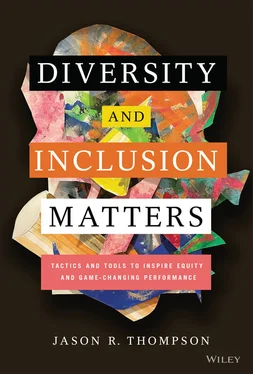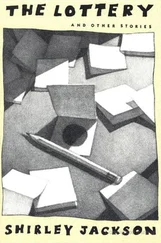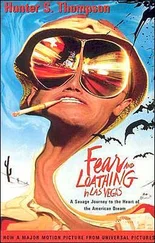Jason R. Thompson - Diversity and Inclusion Matters
Здесь есть возможность читать онлайн «Jason R. Thompson - Diversity and Inclusion Matters» — ознакомительный отрывок электронной книги совершенно бесплатно, а после прочтения отрывка купить полную версию. В некоторых случаях можно слушать аудио, скачать через торрент в формате fb2 и присутствует краткое содержание. Жанр: unrecognised, на английском языке. Описание произведения, (предисловие) а так же отзывы посетителей доступны на портале библиотеки ЛибКат.
- Название:Diversity and Inclusion Matters
- Автор:
- Жанр:
- Год:неизвестен
- ISBN:нет данных
- Рейтинг книги:3 / 5. Голосов: 1
-
Избранное:Добавить в избранное
- Отзывы:
-
Ваша оценка:
- 60
- 1
- 2
- 3
- 4
- 5
Diversity and Inclusion Matters: краткое содержание, описание и аннотация
Предлагаем к чтению аннотацию, описание, краткое содержание или предисловие (зависит от того, что написал сам автор книги «Diversity and Inclusion Matters»). Если вы не нашли необходимую информацию о книге — напишите в комментариях, мы постараемся отыскать её.
Diversity and Inclusion Matters: Tactics and Tools to Inspire Equity and Game-Changing Performance,
Diversity and Inclusion Matters
Diversity and Inclusion Matters — читать онлайн ознакомительный отрывок
Ниже представлен текст книги, разбитый по страницам. Система сохранения места последней прочитанной страницы, позволяет с удобством читать онлайн бесплатно книгу «Diversity and Inclusion Matters», без необходимости каждый раз заново искать на чём Вы остановились. Поставьте закладку, и сможете в любой момент перейти на страницу, на которой закончили чтение.
Интервал:
Закладка:
Subjects: LCSH: Diversity in the workplace. | Equality.
Classification: LCC HF5549.5.M5 T47 2022 (print) | LCC HF5549.5.M5 (ebook) | DDC 331.13/3—dc23/eng/20211007
LC record available at https://lccn.loc.gov/2021039751
LC ebook record available at https://lccn.loc.gov/2021039752
COVER DESIGN: PAUL MCCARTHY
COVER ART: © JUSTUS THOMPSON
Preface
Telling Stories and Bridging the Disconnect
In order to make connections and foster understanding, we must cross bridges. Selma, Alabama, is the site of one of the most powerful bridge crossings in the history of the United States. On July 26, 2020, the body of civil rights leader and American statesmen John Robert Lewis was taken across Selma's Edmund Pettus Bridge one last time as his funeral procession made its way to the Alabama state capital. In 1965, Lewis had nearly lost his life during the Bloody Sunday march on that bridge, which peaceful Civil Rights demonstrators crossed in order to reach Alabama's state capital. In the decades that followed, Lewis worked tirelessly to make sure that bridge would remain open and crossable – both literally and figuratively – for everyone.
My work in diversity, equity, and inclusion (DE&I) in no way compares to Lewis's commitment or accomplishments, but I have endeavored to honor the importance of his historic crossing. I feel strongly that the more we can bridge the divides that separate us, the better we can make this world. As a DE&I professional, building bridges is fundamental to my work.
Over the last 25 years of working on DE&I programs for the US Olympic and Paralympic Committee (USOPC), major sports organizations, institutions of higher education, and large corporations, I have developed a reputation for telling stories that help people build and cross bridges. People often tell me they enjoy my simple stories, and some even go as far as to tell me I have a gift. If I have a gift, it is as a motivator to help people bridge divides, create new understandings, and collaborate – not despite their differences but because of their differences.
My Story
I was born in Japan on a military base to an African American father and a Japanese mother. I have no memories of Japan because after I was born we soon moved to Hawaii. We were a family of six, and I am the youngest of four children. After five years in Hawaii, my dad was transferred to the Air Force base in Cheyenne, Wyoming. I lived in Wyoming until I was in my late 20s.
Growing up in Wyoming was difficult because there are few people with brown skin. My family did not have much money, partly because my parents did not make a lot of money and partly because my dad always made bad decisions with the money we did have. I struggled in school, yet somehow, despite my dyslexia, I graduated from the University of Wyoming with both a bachelor's and a master's degree.
Probably even more unlikely, as a graduate student, I became the first Person of Color to be the student body president at the University of Wyoming. The election process was full of tension and heavy with undertones of racism. On the first day I put up my posters, I received a phone call from someone threatening to beat me up. In addition, it seemed as if my campaign posters were being ripped down within an hour of my putting them up. On a daily basis, students would say to me, “You need to put posters up, or people are not going to know you are running for student body president.” What they did not know was I spent the first hour of every morning walking all over campus putting up posters only to have someone rip them down.
In what now seems like a scene from a story made for a movie, one of the two candidates I was running against wore a hat with the Confederate flag on it. To make the story even more outlandish, the advisor to the student government allowed the fraternity brothers of the incumbent student body president to count the votes for the primary election. The incumbent's fraternity brothers decided it was necessary to throw out ten votes, which meant that I came in ten votes behind the incumbent. Nonetheless, I still made it to the general election runoff against the incumbent.
As the general election drew nearer, things continued to become more contentious. I experienced threats of violence, and my campaign posters, which included a picture of my young son, were defaced with insults and put everywhere to make sure I saw them. The defaced posters were put on the door of the graduate student office I shared with other graduate students in the Sociology Department and on the door of the Multicultural Resource Center where I worked. My wife worked on campus at that time, and she, too, was threatened at work by students who supported the incumbent. The election became so charged with tension that the city of Laramie was asked to bring in their official election equipment, and the city employees conducted the voting process. This was the first and only time in the history of the University of Wyoming when a student election required the oversight of professional election staff and equipment.
In the end, the majority of students at the University of Wyoming saw the divide and crossed the bridge. I won by a landslide on a predominantly white campus with barely 100 Black students. My personal story is one of crossing bridges and overcoming obstacles.
The Bridge Between Intent and Impact
Every company, institution, organization, or association will, at some point either realize the benefits – economic, moral, and social – of diversity, equity, and inclusion, or, in spite of its blindness, will be forced to create programs to survive. There are a lot of DE&I programs, and even more are being started every day. Unfortunately, many of them struggle to fulfill their intentions, and they make common mistakes.
To help illustrate how difficult this process can be, I like to share a story from my personal life. I have dyslexia but was not diagnosed until adulthood. Growing up, I was often told that I was a terrible reader, but my teachers and parents didn't know that I was dyslexic – and I wasn't even aware such a condition existed. Because no one knew the root of my reading troubles, I was often told to work harder on becoming a better reader. To become a better reader, I needed a bridge. It wasn't just about working harder. Identifying a problem (I was a terrible reader) is different from diagnosing it (I am dyslexic), so simply working harder was never a solution. I have worked on being a better reader and writer, but the turning point was being able to type on a computer that can identify my mistakes in real time as I make them. For example, no matter how often I type my first name, I typically misspell it. Luckily, spellcheck puts a red line under my name whenever I make an error. The computer is a bridge to better reading and writing because it helps me see the errors and the solutions. Without that bridge, I simply could not see the errors I was making.
My daily misspellings are a reminder that disconnects can cause problems everywhere. When I cannot consistently spell my name correctly, despite all the repetition, it causes me to wonder whether the disconnect is in what I see or in something that got lost between my brain and hands. These personal challenges have made me think about DE&I differently. In my work, whenever I wonder Why are so many DE&I programs struggling? I know the real question is Where is the disconnect? To become a better reader, I had to identify the root of the problem. There is still some disconnect between my brain and hands, but there are tools that help me achieve. Similarly, trying to figure out where the disconnect is between intent and impact for diversity programs has driven me to find and create the tools to bridge the disconnect. For many diversity officers, there has been a gap between theory and execution, and the recommendations haven't worked.
Читать дальшеИнтервал:
Закладка:
Похожие книги на «Diversity and Inclusion Matters»
Представляем Вашему вниманию похожие книги на «Diversity and Inclusion Matters» списком для выбора. Мы отобрали схожую по названию и смыслу литературу в надежде предоставить читателям больше вариантов отыскать новые, интересные, ещё непрочитанные произведения.
Обсуждение, отзывы о книге «Diversity and Inclusion Matters» и просто собственные мнения читателей. Оставьте ваши комментарии, напишите, что Вы думаете о произведении, его смысле или главных героях. Укажите что конкретно понравилось, а что нет, и почему Вы так считаете.











